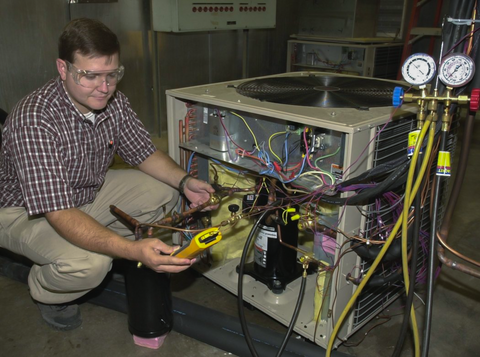
Refrigeration. When that word comes to mind, you probably think about the appliance in your kitchen keeping food fresh and safe to eat. But refrigeration also encompasses air conditioning (in everything from cars to commercial buildings), the transport of food and vaccines across vast distances and much more.
A refrigeration system moves heat from a space to be cooled to the outside environment by circulating a fluid called a refrigerant. First, the fluid boils into a vapor and absorbs heat. Then, it condenses back into a liquid to send the heat outside. It takes a delicate combination of chemical properties for the fluid circulating inside a refrigeration system to work safely and efficiently.
Not all fluids are the same. Some are better at transferring heat, while others are better at changing from liquid to vapor. Some are flammable, some are toxic, and many currently in use are detrimental to our environment.
Adding fluorine atoms to a refrigerant molecule can tame its flammability, but that can make the refrigerant stick around in the atmosphere for many years. Combine this with the tendency of fluorine-containing molecules to trap the infrared heat that our planet emits, and you get refrigerants that can be potent greenhouse gases.
To fight that environmental threat, an amendment to an international treaty in 2016 called for a reduction of the use of fluids with high global warming potential. Now, the entire refrigeration industry that’s responsible for keeping our lives cool is hot on the trail of alternative, eco-friendly refrigerants.
But these alternatives number in hundreds of thousands, so how can they know which ones have that right, delicate blend of properties?
Cue NIST. Our researchers are tackling the question on two fronts: identifying the properties of the alternative fluids AND evaluating the way they would work in the refrigeration equipment that we rely on.
It’s a hot topic for our team. For more information, check out these project pages:
Follow us on social media for more like this from all across NIST!

